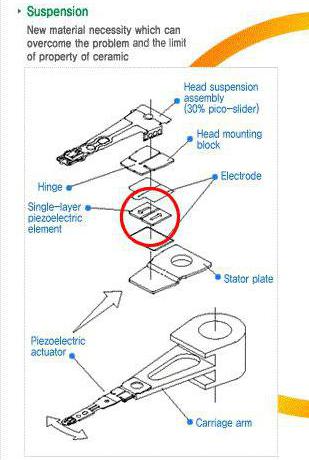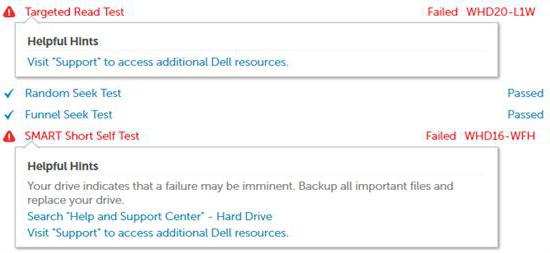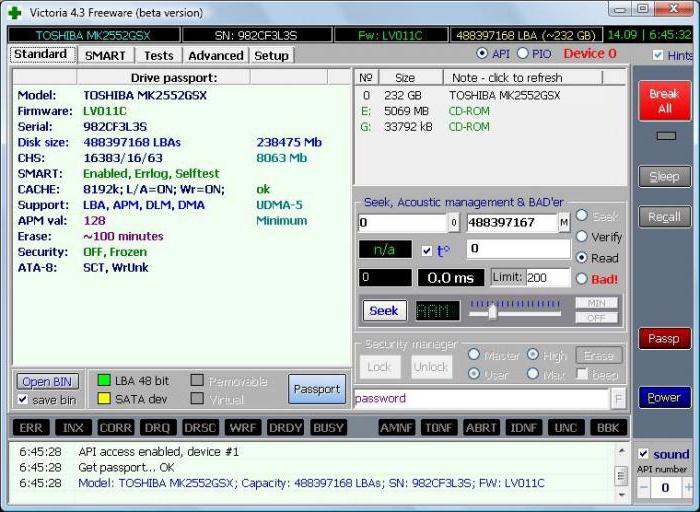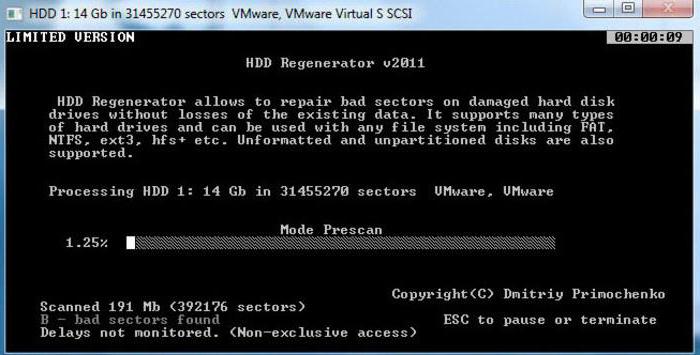SMART technologies: general principles of self-diagnosis of hard drives
As you know, the hard drive on a computer plays one of the key roles, since it is he who is responsible for storing information, whether it be the operating system or user programs and files. And it is this component of the computer that is subject to the greatest wear and tear, since it is used almost every second. That is why most hard drive manufacturers began to use built-in SMART diagnostic technologies that would allow them to be produced regardless of the installed system. Let's try to figure out what it is.
SMART (S.M.A.R.T)?
Before considering the technologies themselves and the functions associated with them, let's turn to the decoding of the abbreviation. S.M.A.R.T (for convenience, we will use the abbreviation SMART) stands for Self-Monitoring, Analysis and Reporting Technology, that is, roughly speaking, it is a system of self-diagnosis, analysis and reporting.
Basic principles of diagnostics
If we approach the understanding of such technology in a broader sense, each user should know that it has nothing to do with the installed operating system. In fact, SMART technologies consist in the use of a certain firmware that is built into the HDD controller at the factory assembly stage. The program itself always works as long as the hard drive is functioning.
At the same time, the assessment of the hard drive includes monitoring the main parameters of the state of the hard drive, the number of which can vary within different limits, but usually there are no more than thirty. The main monitored indicators include the speed of reading or writing data, the physical condition of the disk surface, some parameters associated with the hard drive, etc.
But here's the interesting thing: since the firmware doesn't access the disk in this case using a cable or daisy chain connection, the internal check that is performed does not affect the CPU in any way. It is performed in the background, the hard drive access indicator icon does not blink (or does not light up constantly), but the noise produced by the hard drive is still sometimes heard. This is what surprises many users. Remember, there is nothing to worry about.

However, SMART technologies in the form of firmware tend to use fast verification in most cases. At this stage, only the physical positioning of the hard drive and its electronic components are checked. The whole process takes less than a minute. If for some reason failures occur, a full check can be launched, which already includes surface tests, a check for bad clusters, and much more. Such processes take more time and can last about one hour.
At the same time, standard ATAPI / ATA commands are used to launch checks of any type, and if malfunctions or breakdowns are detected, a warning is issued indicating some kind of error (perhaps even fatal) with a suggestion to back up the data. In most cases, this just indicates that the hard drive, to put it mildly, is time to rest.
Setting SMART goals
As for the setting of tasks for the ongoing checks, here we should highlight several main parameters that will be tested during offline diagnostics:
- average value of the linear speed of reading and writing data;
- the average value of the transition time to a certain track (head positioning);
- average read value of a random sector;
- the maximum search execution time in terms of moving from the zero track to the last one;
- from the cache.
As for the cache, it is worth mentioning separately. In fact, this is a kind of own RAM or a kind of clipboard. The data read from the hard drive is first entered into the cache memory, and only then into the system memory through the appropriate controller on the "motherboard".

But all this concerned only the main parameters. If we talk about an extended check, this should include indicators, the drop in the values of which may indicate disk wear:
- number of sector reassignments;
- total number of reassignment operations;
- current number of unstable sectors;
- reading error rate;
- number of spindle restart retries;
- the number of uncorrectable errors;
- number of read/write errors;
- number of spindle restart cycles;
- operating time in the on state (in hours worked since the start of operation);
- the number of complete cycles of start and stop of the disk;
- the number of times the drive is powered on/off.
Advantages and disadvantages
Actually, the technology itself, in which the firmware is used, is welcomed by everyone. Its use allows you to make a full test of the hard drive in time and prevent data loss.

But along with this, there is one main disadvantage - the program itself does not fix malfunctions or errors that occur, but simply informs the owner that his disk is “dead”. So there is no need to delude yourself about self-diagnosis. The result will be displayed only if the hard drive fails completely. In most cases, it is unrealistic to deal with this, although there are still some loopholes.
The most famous utilities for diagnosing and repairing hard drives
Ignoring self-diagnosis, you should periodically use utilities to monitor the state of the hard drive - at least your own operating system tools, at least third-party utilities. Built-in tools often cause a lot of criticism.
But Victoria of any version today in computer technologies in this area looks like the undisputed leader.

A fairly large resonance at one time was caused by the appearance of an interesting utility that, according to the developers, can bring any “dead” hard drive back to life by reversing the surface. It is difficult to say how one can physically influence the surface at the program level, nevertheless, the fact remains.
Conclusion
Finally, it remains to add that only the main points regarding SMART technologies for offline diagnostics of hard drives are considered here. There was no special excursion into the principles of performing such complex tests, since an unprepared user, as they say, will break his head in them. However, he does not need it. It is enough to understand the basics that are laid down in production, and to independently control hard drives at the present stage of development of computer technology.





